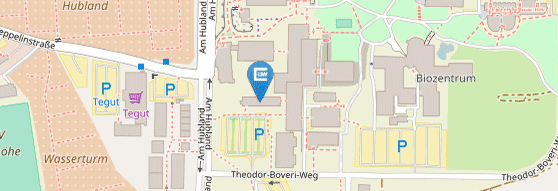Project 6
Project leader:
Carsten Deibel and Vladimir Dyakonov
Julius-Maximilians-Universität Würzburg
Physical Institute
Am Hubland, D-97074 Würzburg
Phone: +49 931 31 83111
E-Mail: dyakonov@physik.uni-wuerzburg.de
The overall project goal is to develop a fundamental understanding of the influence of molecular order on the dynamics of the processes, occurring in molecular bulk semiconductors with variable architecture, along the whole process chain, from light absorption to charge carrier transport. For organic bulk semiconductors, both local and macroscopic mobilities are of importance. The former reflects the potential of the material itself, the second is the essential parameter for device applications. Ideally, one needs to know the whole picture to recognize the application potential of any newly developed material and to deliver feedback on its optimisation: either of the material itself (in case of low local mobility) or of the device under test (macroscopic mobility by far lower than local mobility). In the next project phase, we will apply the method of transient microwave conductivity (TRMC) for selected materials, polymers and oligomers, provided by the FOR 1809 partners, to investigate their microscopic transport properties. TRMC is based on the fact that charge carriers, generated by a light pulse, lead to dielectric losses in the material under study (microwave absorption). A quantitative analysis of TRMC measurements, however, is only possible, if the charge carrier density is known. Therefore, measurement of the microwave response should ideally be done together with measurements of optical density via, e.g. transient absorption (TA) under the same conditions. In the first funding period we succeeded in the construction of a combined set-up, which allows, to carry out both TRMC and TA simultaneously, on the same sample during the same laser excitation pulse, while even including a cryostat for temperature-dependent measurements. We will use this method to systematically study macromolecules based on squaraine conjugates. In contrast to that, indolenine-squaraines can be produced specifically in the form of stretched zig-zag or helical polymer structures. Therefore it is interesting to investigate the influence of the superstructure on the local charge carrier transport. Further, we plan to perform TA/TRMC studies on hierarchical perylenbisimide derivates, forming Jaggregates, which are liquid crystalline in bulk, but may also form aggregates in liquid solution. Again, it will be interesting to find the influence of the aggregate state on local charge dynamics and transport properties. To address the macroscopic conductivity properties of photovoltaic devices, we will perform transient conductivity measurements, such as OTRACE, TDCF, ToF, TPV/TPC. Theoretical analysis will be done in collaboration with the theory partners within the research group.

